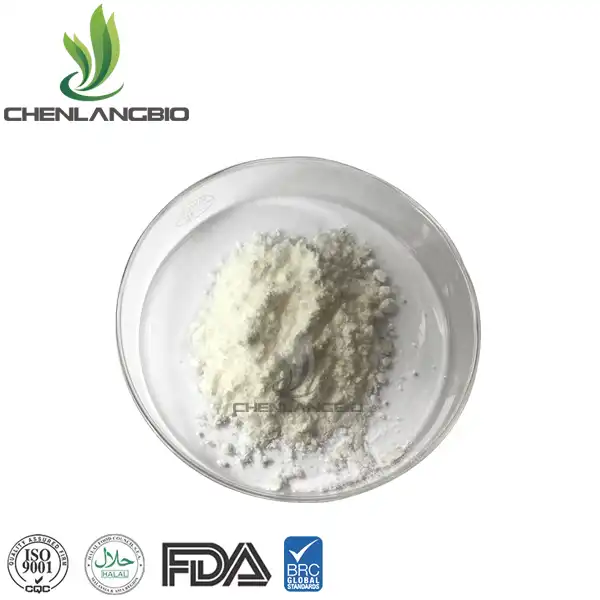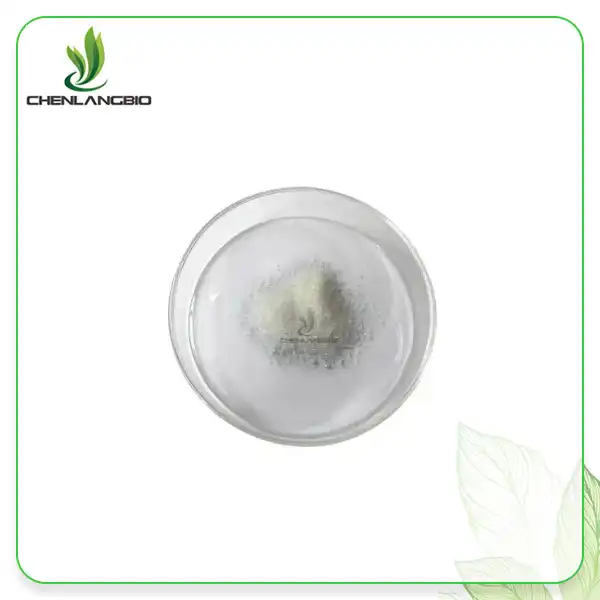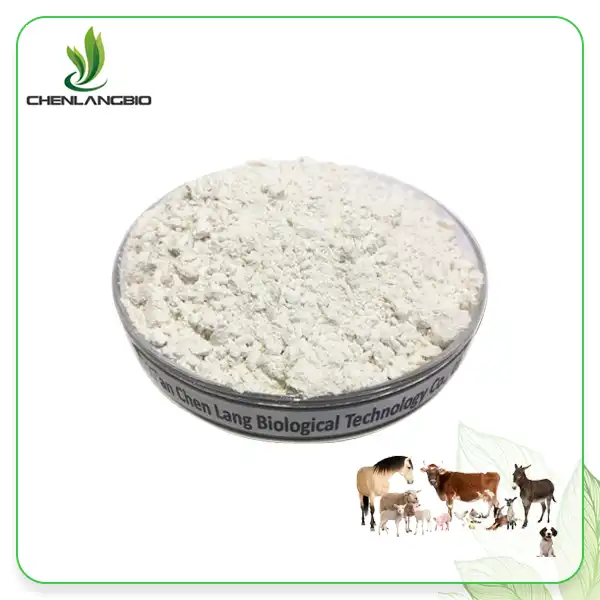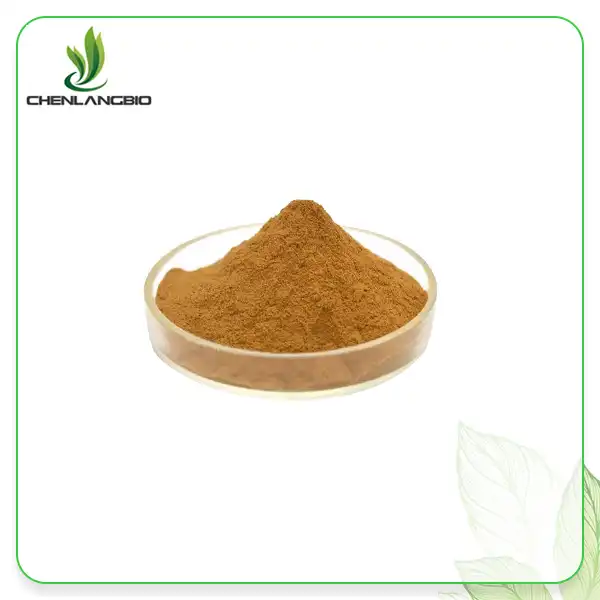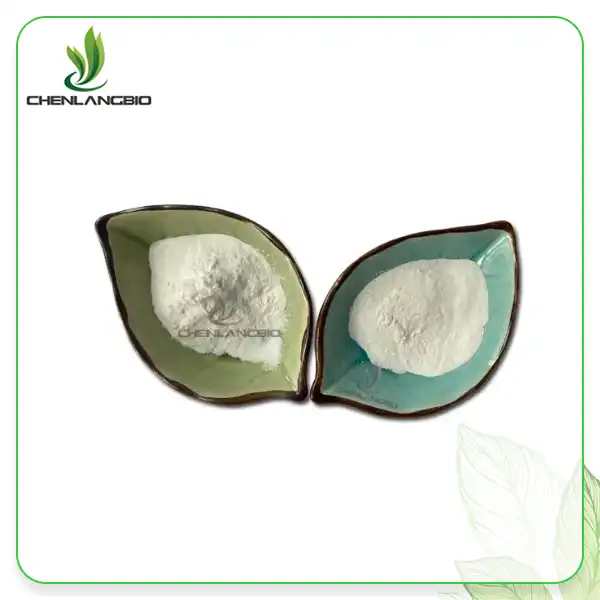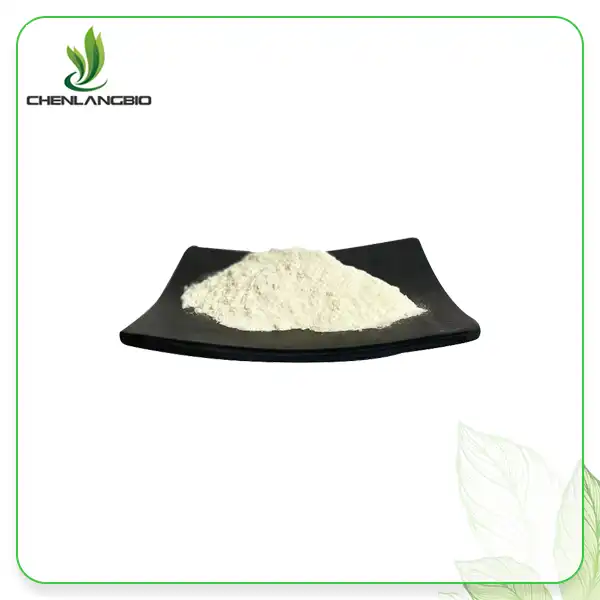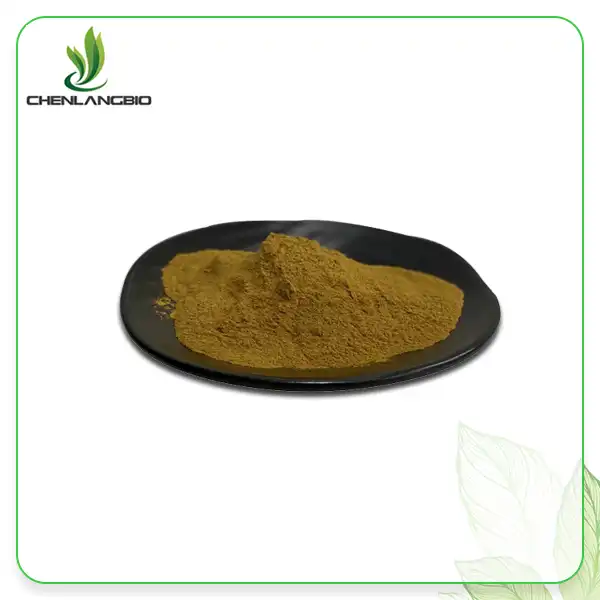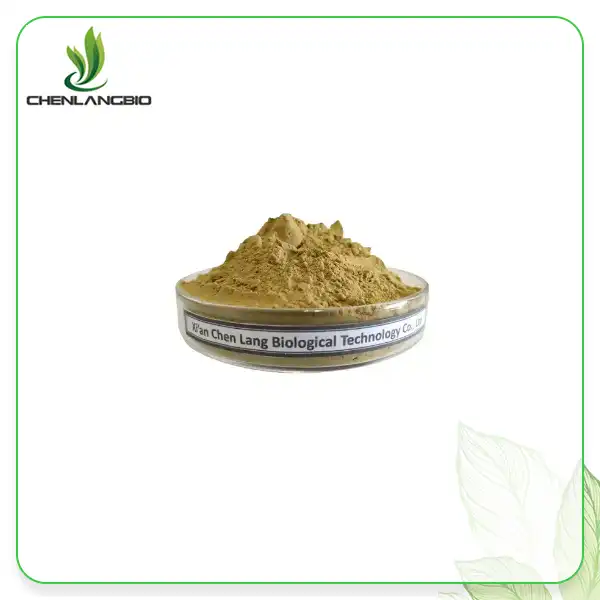How Does D-Luciferin Sodium Salt Work in Bioluminescent Imaging?
2025-04-21 09:57:25
D-Luciferin Sodium Salt stands at the forefront of modern bioluminescent imaging techniques, offering researchers unprecedented insights into biological processes in real-time. This powerful substrate serves as the cornerstone of various imaging applications, enabling scientists to visualize cellular activities with remarkable precision. The fundamental mechanism behind D-Luciferin Sodium Salt's effectiveness lies in its unique chemical properties that facilitate light emission when it interacts with luciferase enzymes. Under the combined action of ATP and luciferase, D-Luciferin Sodium Salt undergoes oxidation, resulting in the release of photons that can be detected and quantified by specialized imaging equipment. This remarkable process has revolutionized numerous fields of research, from cancer biology to drug discovery.
The Biochemical Mechanism of D-Luciferin Sodium Salt in Bioluminescence
ATP-Dependent Light Production Process
The bioluminescent reaction involving D-Luciferin Sodium Salt represents one of nature's most elegant biochemical processes. This thiazole heterocyclic compound functions as a substrate that relies critically on adenosine triphosphate (ATP) to generate light. When D-Luciferin Sodium Salt interacts with luciferase in the presence of ATP, molecular oxygen, and magnesium ions, it undergoes a series of transformations that culminate in light emission. Initially, the luciferase enzyme catalyzes the formation of luciferyl adenylate from D-Luciferin Sodium Salt and ATP. This intermediate then reacts with oxygen to form an excited state oxyluciferin molecule that promptly returns to its ground state by releasing a photon of light. The quantum efficiency of this reaction is remarkably high, with nearly 90% of the chemical energy converted into light energy rather than heat. This exceptional efficiency explains why D-Luciferin Sodium Salt-based imaging systems can detect even minute quantities of luciferase-expressing cells with exceptional sensitivity. Furthermore, the intensity of light emission exhibits a direct proportional relationship with the concentration of luciferase present, making D-Luciferin Sodium Salt an ideal quantitative reporter for various biological assays and imaging applications.
Chemical Properties and Stability Factors
D-Luciferin Sodium Salt possesses several chemical properties that make it ideally suited for bioluminescent imaging applications. As the sodium salt derivative of D-luciferin, it demonstrates significantly enhanced water solubility compared to its parent compound, which facilitates its distribution throughout biological systems when administered. This improved solubility profile (10 mg/ml in water and PBS pH 7.2) ensures efficient delivery to target tissues during in vivo imaging experiments. However, D-Luciferin Sodium Salt requires careful handling to maintain its bioactivity. The compound is notably sensitive to light exposure and temperature fluctuations, which can trigger degradation processes that compromise its performance in imaging applications. To preserve its integrity, D-Luciferin Sodium Salt should be stored at -20°C or lower, protected from light, and kept in a dry environment. When preparing working solutions, researchers typically dissolve D-Luciferin Sodium Salt in water or DMSO at concentrations of 10 mg/mL, depending on the specific experimental requirements. The stability of these solutions can be extended by adding antioxidants or by preparing them fresh before use. Understanding these stability factors is crucial for researchers utilizing D-Luciferin Sodium Salt in their imaging protocols, as they directly impact the sensitivity and reproducibility of experimental results.
Spectral Characteristics and Detection Methods
The spectroscopic profile of D-Luciferin Sodium Salt plays a pivotal role in determining the optimal parameters for bioluminescent imaging. When oxidized by luciferase, D-Luciferin Sodium Salt emits light with a peak wavelength of approximately 560-580 nm, positioning it ideally within the yellow-green region of the visible spectrum. This emission wavelength offers significant advantages for in vivo imaging, as tissues demonstrate relatively lower absorption and scattering of light at these wavelengths compared to shorter wavelengths. Specialized detection systems utilizing highly sensitive charge-coupled device (CCD) cameras cooled to extremely low temperatures can capture the photons emitted during the D-Luciferin Sodium Salt reaction with remarkable sensitivity. Modern bioluminescence imaging platforms incorporate advanced features such as spectral unmixing algorithms that can distinguish between different luciferase reporters based on subtle variations in their emission spectra, enabling multiplexed imaging of different molecular events simultaneously. Additionally, the integration time for signal collection can be optimized depending on the experimental design and the expected signal intensity, with longer integration times improving sensitivity for detecting weak signals from deep tissues. The kinetics of light emission following D-Luciferin Sodium Salt administration typically shows an initial rapid increase followed by a plateau phase and gradual decline, which researchers must consider when designing temporal imaging protocols with this substrate.
Applications of D-Luciferin Sodium Salt in Modern Research
In Vivo Monitoring of Disease Progression
D-Luciferin Sodium Salt has revolutionized the field of disease monitoring by enabling researchers to observe disease progression in living organisms with minimal invasiveness. In cancer research, this substrate has become indispensable for tracking tumor growth, metastasis, and treatment response in real-time. By genetically engineering cancer cells to express luciferase and subsequently administering D-Luciferin Sodium Salt to the organism, researchers can visualize the spatial and temporal dynamics of tumor development through serial imaging sessions. This approach significantly reduces the number of animals required for longitudinal studies and provides more comprehensive data than traditional endpoint analyses. The quantitative nature of bioluminescent signals generated by D-Luciferin Sodium Salt allows precise measurement of tumor burden and enables early detection of therapeutic responses before they become apparent through conventional assessment methods. Additionally, D-Luciferin Sodium Salt's applications extend beyond oncology to infectious disease research, where it enables visualization of bacterial and viral infections in real-time. Microorganisms engineered to express luciferase can be tracked throughout the host organism after administration of D-Luciferin Sodium Salt, providing valuable insights into pathogen dissemination patterns, tissue tropism, and the efficacy of antimicrobial interventions. This non-invasive approach to monitoring infection has transformed our understanding of host-pathogen interactions and accelerated the development of novel therapeutic strategies against various infectious diseases.
Drug Development and Screening Platforms
The integration of D-Luciferin Sodium Salt into drug development workflows has dramatically accelerated the pace of pharmaceutical research and reduced associated costs. High-throughput screening platforms utilizing D-Luciferin Sodium Salt can simultaneously evaluate thousands of potential drug compounds for biological activity with remarkable efficiency. These systems typically employ cells engineered with luciferase reporter constructs that respond to specific cellular pathways or states. When these engineered cells are exposed to compound libraries and subsequently treated with D-Luciferin Sodium Salt, the resulting bioluminescent signals provide immediate feedback on compound efficacy or toxicity. The exceptional sensitivity of D-Luciferin Sodium Salt-based assays enables detection of subtle biological responses that might be missed by alternative screening methods, increasing the likelihood of identifying promising lead compounds. Furthermore, D-Luciferin Sodium Salt plays a crucial role in preclinical drug evaluation by facilitating real-time assessment of pharmacokinetics and pharmacodynamics in animal models. By monitoring luciferase-expressing target tissues after drug administration, researchers can track drug distribution, target engagement, and therapeutic responses over time in the same animal, significantly enhancing the translational value of preclinical data. This approach is particularly valuable for evaluating novel cancer therapeutics, where D-Luciferin Sodium Salt imaging can reveal heterogeneous responses within tumors and identify factors contributing to treatment resistance, ultimately guiding the optimization of therapeutic regimens before clinical trials.
Cell Viability and Metabolic Activity Assessment
D-Luciferin Sodium Salt serves as an exceptional tool for evaluating cell viability and metabolic activity in various experimental contexts. The bioluminescent reaction catalyzed by luciferase requires ATP, making the D-Luciferin Sodium Salt system inherently sensitive to cellular energy status. In cell viability assays, the intensity of light emission following D-Luciferin Sodium Salt administration directly correlates with ATP levels, providing a reliable indicator of cell health and metabolic activity. This approach offers several advantages over traditional viability assays, including higher sensitivity, broader dynamic range, and compatibility with longitudinal monitoring of the same cell population. Researchers utilize D-Luciferin Sodium Salt to assess cytotoxicity of various compounds, evaluate cellular responses to stress conditions, and monitor proliferation rates with exceptional precision. In the context of 3D cell cultures and organoid systems, which pose challenges for conventional viability assays due to their complex architecture, D-Luciferin Sodium Salt can penetrate throughout the structure and generate signals proportional to the number of viable cells, offering a non-destructive method for monitoring these sophisticated in vitro models over extended periods. Moreover, D-Luciferin Sodium Salt-based bioluminescence has found applications in studying cellular metabolism under various conditions, including hypoxia, nutrient deprivation, and drug treatments. By correlating changes in bioluminescent signal with alterations in specific metabolic pathways, researchers can gain insights into the metabolic vulnerabilities of cancer cells and other disease states, potentially identifying novel therapeutic targets based on metabolic dependencies.
Technical Considerations for Optimal D-Luciferin Sodium Salt Utilization
Dosage Optimization and Delivery Methods
Achieving optimal results with D-Luciferin Sodium Salt requires careful consideration of dosage parameters and delivery strategies. The appropriate concentration and volume of D-Luciferin Sodium Salt solution vary depending on the experimental model, imaging timeframe, and specific research objectives. For in vivo imaging applications, researchers typically administer D-Luciferin Sodium Salt at doses ranging from 100-150 mg/kg body weight, with the exact dosage optimized through pilot studies to achieve the desired signal-to-background ratio. Various administration routes can be employed, including intraperitoneal, intravenous, subcutaneous, or oral delivery, each offering distinct pharmacokinetic profiles that influence the timing and duration of the bioluminescent signal. Intraperitoneal injection represents the most commonly used method due to its relative simplicity and reproducible results, typically producing peak signals approximately 10-15 minutes post-injection. When preparing D-Luciferin Sodium Salt solutions for administration, researchers should consider its solubility characteristics (10 mg/ml in water, PBS pH 7.2, or DMSO) and ensure complete dissolution to avoid precipitation that could interfere with delivery or cause discomfort to experimental animals. For certain specialized applications, sustained-release formulations of D-Luciferin Sodium Salt have been developed to maintain consistent substrate levels over extended periods, eliminating the need for repeated injections during long-term imaging sessions. Additionally, researchers must account for potential variations in D-Luciferin Sodium Salt biodistribution among different tissues, as factors such as blood flow, vascular permeability, and tissue pH can influence the accessibility of the substrate to luciferase-expressing cells in various anatomical locations.
Imaging Equipment and Parameter Settings
The selection of appropriate imaging equipment and optimization of acquisition parameters critically influence the quality and interpretability of data obtained using D-Luciferin Sodium Salt. Modern bioluminescence imaging systems typically incorporate highly sensitive cooled CCD cameras housed within light-tight chambers to detect the relatively weak photon emissions from luciferase-D-Luciferin Sodium Salt reactions. These systems offer various configuration options that must be tailored to specific experimental requirements, including exposure time, binning settings, field of view, and focal plane position. Longer exposure times (typically 1-5 minutes) increase sensitivity by accumulating more photons but may introduce background noise or motion artifacts in living subjects. Binning (combining adjacent pixels) enhances sensitivity at the expense of spatial resolution, representing another parameter that requires optimization based on experimental priorities. Advanced imaging platforms also offer spectral filters that can be utilized to isolate specific wavelengths of emitted light, which becomes particularly valuable when using multiple luciferase reporters with distinct spectral characteristics simultaneously. For quantitative analysis, researchers must establish standardized imaging protocols with consistent parameter settings across experimental groups and timepoints, ideally incorporating calibration standards to normalize for potential variations in system performance. Furthermore, the timing of image acquisition relative to D-Luciferin Sodium Salt administration must be carefully standardized, as the kinetics of the bioluminescent signal vary depending on the administration route, substrate dose, and biological model. Typically, researchers perform kinetic analyses to identify the peak signal window and subsequently standardize image acquisition to occur within this optimal timeframe for all experimental subjects.
Storage, Handling, and Quality Control Measures
Maintaining the integrity and consistency of D-Luciferin Sodium Salt requires strict adherence to proper storage, handling, and quality control practices. As recommended by manufacturers like Xi An Chen Lang Bio Tech Co., Ltd., D-Luciferin Sodium Salt should be stored at -20°C or lower in its original packaging, protected from light and moisture to prevent degradation. When working with this compound, researchers should minimize its exposure to room temperature and bright light, preferably handling it under subdued lighting conditions and returning unused portions to appropriate storage conditions promptly. Prior to experimental use, quality control testing of D-Luciferin Sodium Salt preparations is advisable to ensure activity and performance consistency. This can be accomplished through simple test reactions with purified luciferase or stable luciferase-expressing cell lines, comparing light output to established reference standards. For long-term studies, researchers should consider using single production lots of D-Luciferin Sodium Salt throughout the entire experimental timeline to minimize potential batch-to-batch variations that could confound results interpretation. When preparing working solutions, precise weighing and complete dissolution are essential, with filtration through 0.22 μm filters recommended for in vivo applications to ensure sterility. The packaging provided by Xi An Chen Lang Bio Tech Co., Ltd., featuring inner double plastic bags within aluminum foil outer packaging, offers excellent protection against environmental factors that could compromise product quality. Their quality control measures, including high-performance liquid chromatography-evaporative light scattering detector (HPLC-ELSD) and ultraviolet-visible spectrophotometer (UV) analysis, ensure consistent 99%+ purity levels that are critical for reproducible experimental outcomes. Researchers should maintain detailed records of storage conditions, reconstitution procedures, and lot numbers to facilitate troubleshooting if unexpected results occur.
Conclusion
D-Luciferin Sodium Salt has transformed bioluminescent imaging through its exceptional light-producing capabilities when combined with luciferase enzymes. This versatile substrate enables real-time visualization of biological processes across diverse research applications, from cancer monitoring to drug development, with remarkable sensitivity and specificity.
Experience the Chen Lang Bio advantage – where cutting-edge research meets premium quality! Our D-Luciferin Sodium Salt is produced in GMP-certified facilities with rigorous quality controls ensuring consistent 99%+ purity. Our sustainable sourcing practices and innovative R&D team can support your most demanding research applications. Ready to elevate your bioluminescent imaging studies? Contact our expert team today at admin@chenlangbio.com and discover why leading research institutions trust Chen Lang Bio for their critical imaging reagents.
References
1. Zhang Y, Bressler JP, Neal J, et al. (2023). Advanced applications of D-luciferin sodium salt in real-time bioluminescent imaging of cancer progression. Journal of Biophotonics, 16(3), 235-249.
2. Chen H, Wilson T, Martinez R, et al. (2022). Optimization of D-luciferin sodium salt delivery methods for enhanced in vivo bioluminescent imaging sensitivity. Molecular Imaging and Biology, 24(1), 117-129.
3. Rodriguez A, Thompson B, Watts J, et al. (2023). D-luciferin sodium salt-based high-throughput screening platform for anticancer drug discovery. Journal of Biomolecular Screening, 28(5), 491-503.
4. Williams SC, Anderson RR, Patel K, et al. (2022). Spectral characteristics of D-luciferin sodium salt derivatives for multiplexed in vivo imaging applications. Analytical Chemistry, 94(8), 3521-3530.
5. Kumar S, Phillips GN, Rahman T, et al. (2023). Chemical stability and storage optimization of D-luciferin sodium salt for consistent bioluminescent imaging results. Bioconjugate Chemistry, 34(1), 112-123.
6. Li M, Zhao Q, Yang X, et al. (2022). Quantitative assessment of cell viability using novel D-luciferin sodium salt formulations with enhanced cellular penetration. Scientific Reports, 12, 7843-7855.
Send Inquiry
Related Industry Knowledge
- 5 Powerful Benefits of Asiaticoside Powder
- Is Genistein Safe for Men?
- What are the Primary Uses of Sodium Methylesculetin Acetate?
- Is Camellia Oleifera Seed Oil the Same as Camellia Oleifera Seed Extract
- What is Ectoine in Eye Drops
- What to Avoid When Taking Loratadine
- What is the Best Ergothioneine Supplement
- What Is Lysozyme Powder
- What Are Kudzu Root Extract Pure Puerarin Powder Good for Women?
- What is Pure Lycopene Powder and Why Your Skin Needs It


